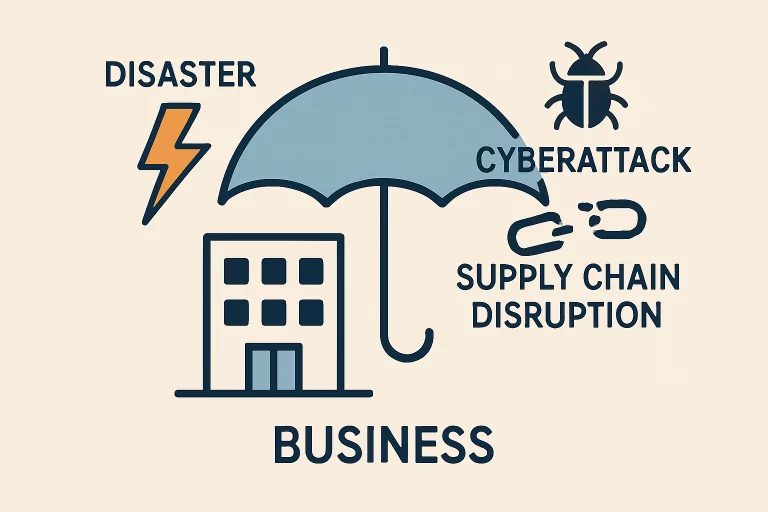Safeguarding Your Enterprise: A Practical Guide to Developing a Business Continuity Plan That Truly Works When It Matters Most
In today’s dynamic and unpredictable environment, the value of robust business continuity planning cannot be overstated. More than ever, organizations face an increasingly diverse range of threats, including sudden cyberattacks, catastrophic natural disasters, prolonged supply chain disruptions, and global pandemics.
Establishing a strong Business Continuity Plan (BCP) is fundamental for ensuring that your organization can quickly adapt and sustain essential operations in the face of disruption. A reliable BCP is not only about keeping processes running; it’s about protecting your business’s reputation, customer relationships, and enterprise value.
To craft a plan that truly works, it’s wise to leverage specialist resources, such as https://nfina.com/backup-and-disaster-recovery/, to understand how strategic backup and disaster recovery solutions can be seamlessly integrated into your continuity framework and bolster organizational resilience at every level.
A well-designed BCP minimizes both financial and operational fallout from interruptions. It serves as a visible assurance to stakeholders, customers, partners, regulators, and employees alike that your organization is fully committed to planning for the worst while continuing to deliver on its promises.
By building a robust BCP, you’re demonstrating leadership and foresight, which positions your business to weather storms and recover stronger after any incident. In the following sections, we will break down the components of an effective business continuity plan, giving you a step-by-step guide to safeguard your organization now and in the future.

Contents
Understanding Business Continuity Planning
Business continuity planning is a comprehensive approach designed to help organizations anticipate, prepare for, and mitigate the disruptive effects of unforeseen events. Unlike disaster recovery, which is typically focused on restoring IT and technological assets after a negative event, BCP encompasses the entire organization, spanning critical business processes, personnel, facilities, technology infrastructure, and third-party dependencies.
The core objective of a BCP is to maintain or quickly resume essential services and functions, regardless of the type or scale of disruption faced. By forecasting potential threats and strategically planning responses, organizations can minimize costly downtime, regulatory risks, and reputational harm. This preparation also reassures customers and partners that their needs will remain a top priority, even under challenging circumstances.
Conducting a Business Impact Analysis
The initial phase of any effective BCP is the Business Impact Analysis (BIA). This process involves a critical examination of the organization’s operations to identify which business functions are essential and to determine the dependencies supporting those functions. A thorough BIA asks:
- Which departments and activities are vital for the day-to-day survival and long-term success of the business?
- What would be the operational, financial, and reputational ramifications if these functions were interrupted?
- How can losses be measured and quantified, factoring in the direct and indirect impact of lost sales, regulatory fines, higher costs, and weakened trust?
By mapping business processes and supporting elements, such as staff, equipment, software systems, suppliers, and physical locations, a BIA highlights what truly drives your organization. This clarity ensures that limited resources are directed toward protecting crucial operations, reducing the risk of devastating disruptions. A well-informed BIA provides the foundation on which all subsequent BCP decisions are built, making it an indispensable first step.
Identifying and Prioritizing Risks
Once vital business functions are mapped, the next phase is to systematically identify, assess, and prioritize the risks most likely to disrupt these critical operations. Risks can originate from several domains, including
- Natural events such as hurricanes, earthquakes, floods, and wildfires
- Technological disruptions due to cyberattacks, data breaches, software failures, or hardware issues
- Human elements, including accidental errors, labor strikes, workplace violence, or deliberate sabotage
- External dependencies, such as disruptions among suppliers, service providers, or essential third-party partners
Each potential risk should be evaluated by its likelihood of occurrence and its potential to cause harm. This process, often referred to as risk assessment or risk prioritization, enables firms to focus their efforts on preparing for the dangers that matter most.
By doing this, organizations can utilize risk matrices or scoring tools to visualize and rank threats, ensuring preventive and contingency measures are applied where they are most urgently needed, while still covering secondary risks as appropriate.
Developing Continuity Strategies
With risks prioritized, organizations can develop robust, actionable strategies to maintain operations under adverse conditions. Common elements of written continuity strategies include
- Establishing alternate worksites or enabling remote work technologies to ensure continued productivity even if primary facilities are inaccessible or unsafe
- Deploying secure, comprehensive disaster recovery solutions that protect mission-critical data and facilitate rapid recovery, ensuring the organization’s survival.
- Promoting flexible work policies and cross-training employees so that critical responsibilities can be handed off seamlessly when key personnel are unavailable
These strategies must account for all major contingencies, providing step-by-step instructions and predefined triggers for activating responses. A prepared organization can carry out business functions with minimal interruption, even in the face of unprecedented challenges.
Crafting the Plan
At the heart of any effective BCP lies a documented, user-friendly plan. The written continuity plan should spell out:
- Simple, actionable procedures for various emergency scenarios, from extended power outages and cyber incidents to facility lockdowns and workforce shortages
- Explicit recovery paths for each core function: what needs to be done, who is responsible, and the correct sequence of actions
- Assign roles and responsibilities, ensuring everyone knows exactly what to do and whom to contact in an emergency.
The plan should be both detailed and flexible, sufficiently structured to guide swift action, yet adaptable to unforeseen developments. Well-organized plans help staff avoid confusion and hesitation, accelerating recovery and maintaining order during stressful incidents.
Implementing the Plan
No matter how expertly crafted, a business continuity plan is only effective if it is implemented. Proper implementation involves
- Delivering ongoing training and awareness programs so that every employee knows their specific role and the procedures to follow if an incident occurs
- Organizing periodic drills, tabletop exercises, and scenario simulations to test the plan’s effectiveness, reinforce learning, and uncover process gaps or weaknesses
- Maintaining reliable and secure communication channels that ensure information is disseminated quickly and accurately to staff, customers, partners, and leadership during crises
By embedding the continuity plan into the fabric of daily business and ensuring staff are ready and confident to act, organizations significantly enhance their ability to respond and recover from disruptions of any scale.

